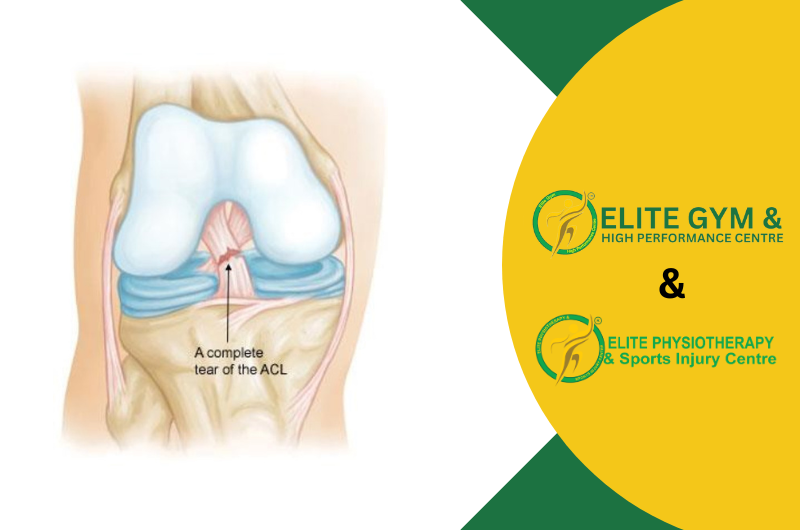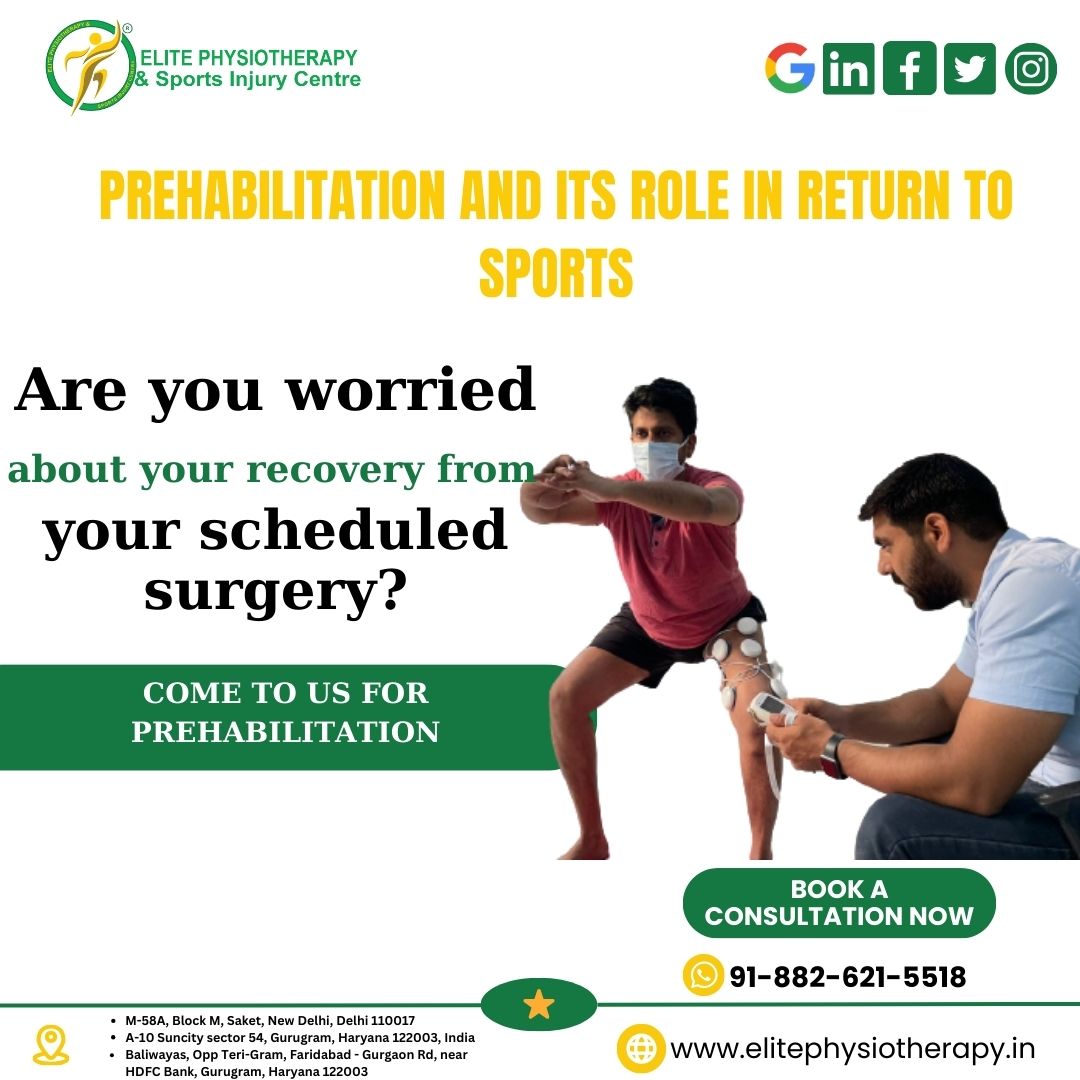A common condition that affects people of all activity levels is anterior knee pain syndrome (AKPS), also referred to as patellofemoral pain syndrome. It is typified by pain behind or around the kneecap, which is frequently made worse by exercises like stair climbing, squatting, and jogging. At Elite Physiotherapy and Sports Injury Centre, we place a strong emphasis on a thorough, customized approach to assist patients in effectively managing and recovering from AKPS.
Causes of Anterior Knee Pain Syndrome
AKPS is often caused by a combination of factors, including:
- Muscle imbalances: Incorrect kneecap alignment can result from weakness or stiffness in the quadriceps, hamstrings, and gluteal muscles, which puts more strain on the patellofemoral joint.
- Biomechanical problems: An irregular gait or overpronation (flat feet) are examples of poor lower extremity alignment that can lead to AKPS.
- Overuse: The soft tissues surrounding the kneecap may become inflamed as a result of repetitive stress from exercises like running or jumping.
- Patellar tracking disorder: This painful condition is brought on by the kneecap’s irregular movement inside the femoral groove.
Symptoms
- Pain behind or around the kneecap, particularly while jogging, crouching, or climbing stairs.
- Knee swelling or a sensation of stiffness.
- Noises that pop or crack as the knee is bent or extended.
- Knee pain that makes it difficult to sit for extended periods of time.
Physiotherapy Management at Elite Physiotherapy and Sports Injury Centre
At our center, we take a holistic approach to treating AKPS, addressing both the underlying causes and the symptoms. We customize our treatment strategies as follows:
- Individualized Assessment
Every patient has a thorough evaluation to find any functional limits, biomechanical problems, or muscular imbalances. This enables us to create a customized rehabilitation program that focuses on the particular causes of individual AKPS.
- Strengthening and Conditioning
Strengthening the muscles, especially the quadriceps, glutes, and hamstrings, is the main goal of AKPS therapy. Our focus at Elite Physiotherapy is on functional exercises that improve the strength and stability of the lower limbs, like:
- Squats: Adapted variations such as wall squats or band-assisted squats can strengthen the muscles surrounding the patellofemoral joint and lessen knee pain.
- Hip abduction and extension exercises: To strengthen the glutes and increase hip stability in general.
- Step-ups: To increase knee strength and control, gradually increase the number of steps from lower to higher.
- Manual Therapy
To reduce pain, increase flexibility, and return the knee to its natural movement patterns, we employ manual therapy techniques such as myofascial release, patellar mobilization, and soft tissue mobilization.
- Biomechanical Adjustments
We can treat problems like overpronation that lead to AKPS by examining gait patterns and foot posture. We might suggest orthotics or supportive shoes to improve alignment and lessen knee joint stress.
- Using bracing and taping
In order to help patients with patellar tracking problems position their kneecap properly and minimize pain while engaging in activities, we may employ braces or taping treatments.
- Education and Activity Modification
In order to prevent aggravating the knee, we instruct patients on appropriate movement mechanics, warm-up methods, and activity adjustment tactics. This lowers the chance of re-injury and helps guarantee long-term success.
Long-Term Management and Prevention
In addition to providing pain relief, Elite Physiotherapy aims to provide its clients the information and abilities they need to take long-term care of their conditions. We advise on how to progressively resume high-impact activities like running or sports and design at-home workout regimens to preserve strength and flexibility.
Conclusion
Although anterior knee pain syndrome can be a painful and frustrating condition, it is controllable with the correct care. Our goal at Elite Physiotherapy and Sports Injury Centre is to help you recover from AKPS and resume your active lifestyle by offering individualized care. Our staff is here to assist your rehabilitation path with professional advice and evidence-based therapies, whether you’re an athlete or someone who has knee pain daily.



